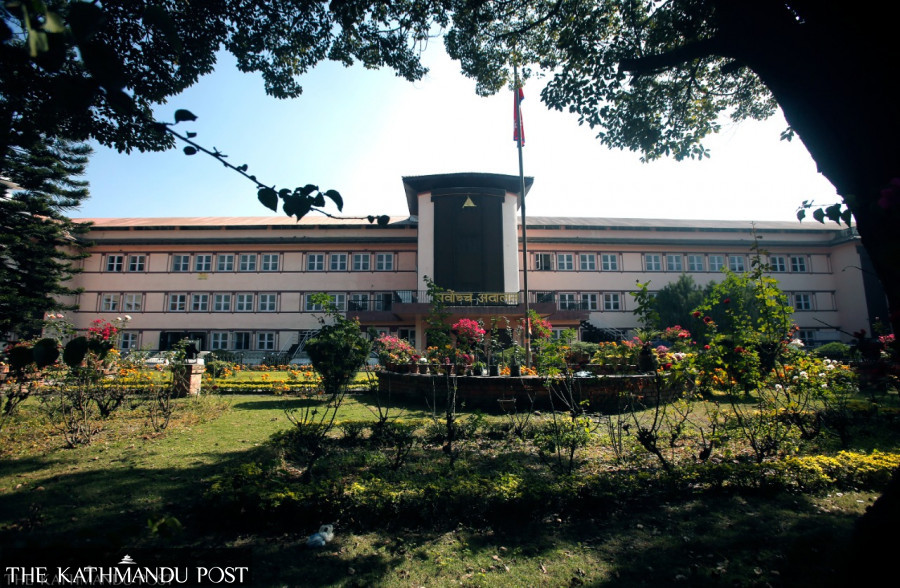National
Supreme Court 3-2 ruling quashes all government decisions so far on Nijgadh airport
3 justices order the government to build an international airport with minimal environmental damage but stop short of specifying where.
Post Report
A 3-2 ruling of the Supreme Court has quashed all government decisions regarding the construction of Nijgadh International Airport in Bara.
The full text of the extended full bench comprising Justices Hari Krishna Karki, Bishowambhar Prasad Shrestha, Ishwar Prasad Khatiwada, Prakash Man Singh Raut and Manoj Sharma was released by the Supreme Court on Wednesday.
Quashing all the government decisions so far regarding the Nijgadh airport, Shrestha, Khatiwada and Raut have ordered to build the airport with minimum environmental damage. The justices, however, have not specified where such an airport should be built.
Sharma and Karki, however, have observed that an alternative should be sought to build the airport within the Nijgadh area with efforts to minimise environmental loss.
The airport was being planned as an alternative to Kathmandu’s Tribhuvan International Airport.
The fate of the $3.45 billion Nijgadh International Airport had been hanging in the balance for years, with successive governments pushing for it and environmentalists resisting it equally fervently, citing massive damage to the environment, biodiversity, local communities and wildlife that the touted project would cause.
Located 175 km south of Kathmandu, the proposed construction site lies adjacent to Parsa National Park, which is a forest corridor for big wildlife like tigers and elephants, and home to rich biodiversity. The entire area is blanketed in dense forests of Shorea robusta trees, also known as sal or sakhuwa.
According to an environmental and social impact assessment carried out by the Tourism Ministry in February 2017, more than 2.4 million small and large trees would have to be felled to build the international airport, in three phases.
The government has poured more than Rs2 billion into the project so far. According to officials of the Civil Aviation Authority of Nepal, nearly Rs800 million has been distributed as compensation to the project-affected people.
Last year, the Civil Aviation Authority spent Rs300 million to prepare a revised master plan for the airport.
In April 2012, Landmark Worldwide Company of South Korea conducted a detailed feasibility study for the airport at a cost of $3.55 million and submitted its report to the government
In 1995, the government initiated discussions to construct a second international gateway in the plains as an alternative to Nepal’s only international airport in Kathmandu.
The decision followed two deadly aviation disasters involving Thai Airways and Pakistan International Airlines in the hills surrounding Kathmandu in 1992. This gave momentum to discussions on an alternate airport and how the difficult topography of Kathmandu poses a challenge for even experienced pilots to land.
The project remained on the drawing board for two decades, and gained renewed urgency after a Turkish Airlines aircraft skidded off the runway in Kathmandu in March 2015, causing the airport to be closed down for four days.
The proposed Nijgadh International Airport got embroiled in a controversy after an environment impact assessment showed that more than 2 million trees would have to be cut down to build the facility. For the past year, environmentalists have been campaigning against it, arguing that the damage the project would cause to the environment and biodiversity would be irreparable.




 8.12°C Kathmandu
8.12°C Kathmandu














